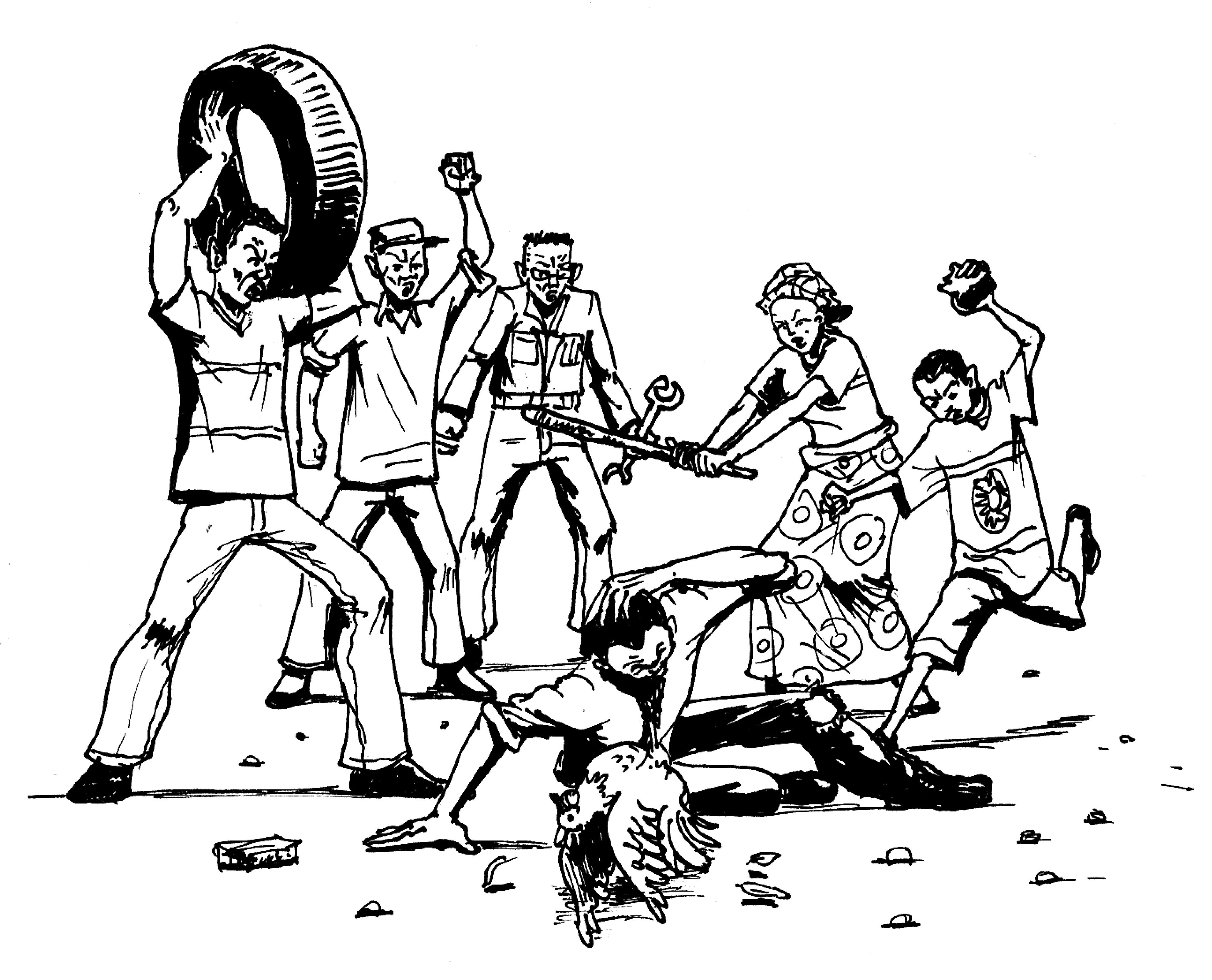
July 17, 2024
Adv. Varun chugh
NEW CRIMINAL LAWS
The new criminal laws have come into effect this Monday, on July 1st, 2024. The new criminal laws have been advocated or rather promoted as harbingers of change as they are replacing the British era laws of criminal justice in our independent country, India. In this article, the author has made efforts to prepare and analyze the changes which have been introduced in the new Acts.
The Act called the Code of Criminal Procedure is now replaced by the Bharatiya Nagrik Suraksha Sanhita which roughly translates to Indian Citizens Security Code, the Indian Penal Code is now replaced by the Bharatiya Nyaya Sanhita (Indian Justice Code) and the Indian Evidence Act is now Bharatiya Sakshya Adhiniyam (Indian Evidence Act). Thus, the code for defining criminal procedure is now being called a security code. The Act for penalizing criminals is now a code for ensuring justice while the Act governing evidence has remained the same. Thus, the Acts have indeed brought Indiacism to the laws but are they truly indigenous or just in namesake only?
There are still some unanswered concerns but this author takes your leave to just focus on the changes which have been brought up in the laws. Let us first understand the justice brought out in the penal law, i.e., the Bharatiya Nyaya Sanhita. The new Act has introduced the concept of community service in India. The Sanhita, unlike the old law, now facilitates prosecution of persons located in foreign country for abetment of any offense. The Sanhita has also introduced punishments for engaging children for committing any offense and also for mob-lynching, causing death by negligent driving, organized crime and acts of terrorism under it only. The Sanhita has introduced punishments for sexual intercourse through deceitful means as well as punishment to anyone, i.e., including women for voyeurism and use of force or assault with intent to disrobe a woman. It has universalized the punishment for rape of all women who are incapable of giving a valid consent for voluntary sexual intercourse. Furthermore, the minimum punishment for rape of a woman under the age of sixteen is now twenty years whilst it was just ten in the old law. It has included the punishment of death for perpetrators of gang rapes, no matter what the age of the child victim is. The Sanhita also removes the gender differences with regards to victims of child procuration as procuration of all children is now punishable rather than only minor girls as in the old Act. The Sanhita now raises the age of the female victims of marital rape to 18 years from 15 years. The Sanhita has enhanced punishment for culpable homicide, abetment of commission by public and death caused by negligent acts. The Sanhita has brought relaxation for commission of murder and attempt to murder by life- convicts by allowing punishments of life imprisonment besides death. The Sanhita has also made commutation laws more liberal.
Thus, the new Penal law, in crux introduces punishment for new crimes which have emerged in the current world. Thus it serves the needs of the present society. It has made punishment for child rapes age neutral. It has removed the gender differences with regards to who can be punished for crime against women. Furthermore, punishment for a lot of crimes have been enhanced in terms of imprisonment time as well as by introduction of death sentences. The author, at this juncture leaves a question for our readers – Are our penal laws now reformative or retributive? Have our penal laws truly become just and not penalizing in nature?
Now, moving on to the next Act, i.e., the Bharatiya Nagrik Suraksha Sanhita which replaces the Code of Criminal Procedure, the author is still at awe seeing the nomenclature which has changed from procedure to security. Keeping his personal concerns aside, the author will now take you all through the changes introduced in the Sanhita. First of all, the Sanhita has included the definitions of electronic communication means like audio visual devices, highlighting its prime role in the 21st century criminal law. The Sanhita expands the scope of medical examination of accused in certain cases wherein now any police officer can request such an examination whereas earlier only officers at sub-inspector level or above could do so. The Sanhita has mandated forensic investigation in all cases wherein the imprisonment time is seven years or more and also dictates that the entire process should be recorded electronically simultaneously. Furthermore, it mandates that whosoever is called to witness a search shall do so and its refusal amounts to an offence. The Sanhita mandates that the Investigating Officer shall send copies of the records of the searches to the Magistrate within forty-eight hours. Furthermore, it enhances the powers of the Magistrate to allow him to record fingerprints and voice samples of any person. The Sanhita has also fixed timelines for various criminal procedures, for example the medical report of rape victims has to be submitted within seven days, judgements have to be delivered within thirty days, extendable up to forty-five days of the conclusion of the final arguments, etc. The Sanhita has enhanced the powers of police custody by providing that the same can be sought in the initial period of forty or sixty days unlike Cr.P.C. which limited it to the initial fifteen days. The Sanhita has increased the usage handcuffs which now extends to repeat or habitual escapee offenders, commissioners of rape, acid attack, organized crimes, drug related crime or offences against the state. The Sanhita has reduced the scope of mandatory bails by disallowing it for under-trials facing charges of multiple offences. However, it brings relaxation for first-time offenders who may be granted bail after serving one-third of the maximum sentence. The Sanhita has limited the effectiveness or benefit of plea bargaining by limiting its time period for application to within thirty days of framing of charges. Furthermore, plea bargaining under the Sanhita can only be made for sentence bargaining and nothing else. The Sanhita extends the provisions of attachment of property to movable properties too. Furthermore, it has introduced conditions for preliminary enquiry into offences punishable with imprisonment of three to seven years wherein the same has to be done with permission of Deputy Superintendent of Police and must be completed within fourteen days, simultaneously mandating sending of daily diaries to the Magistrate once every fourteen days and that the inquest reports be sent to the DM/SDM within twenty-four hours. The Sanhita brings some comfort to the victims of rape whose statements shall be recorded at the residence and may also be done with the use of audio-visual electronic means including mobile phones. Furthermore, no courts are empowered to allow prosecution to withdraw without hearing the victim first. The Sanhita mandates that the judicial magistrates must record the statements of the witnesses brought by the police officers. Proclaimed offenders who have absconded to evade trial and there is no immediate prospect of arresting them, the court in those cases can proceed with trial in-absentia and pronounce judgement after waiting for a mandatory period of ninety days. The Sanhita empowers any court or in-charge of Police station to summon electronic evidence.
Thus, the Sanhita has made many provisions under it very liberal as compared with the old law. Most notably, it has fixed timeline for all the major procedures under it. It has defined a fixed timeline for framing of charges, applications for discharge and plea bargaining along with examination of the witnesses and pronouncement of judgement. Hence, it brings strong hopes of a speedy justice mechanism in the criminal cases of India. Furthermore, the adoption of electronic communication and recording means highlights the importance of the electronic evidences and their role in deciding upon the guilt of the accused persons.
Now the author takes your attention towards the new laws on evidence, called the Bharatiya Sakshya Adhiniyam which replace the Indian Evidence Act. The Adhiniyam retains most of the provisions of the old law including those on confessions, relevancy of facts and the burden of proof. It has accorded the status of primary evidence to electronic records provided they are produced through proper custody. The Adhiniyam has recognized the prime usage of electronic communication devices and has allowed recording of oral evidences through electronic means. Furthermore, it has expanded the scope of secondary evidence to include oral and written admissions along with testimonies of persons who are skilled in examining documents and have examined the document. The Adhiniyam has enhanced the scope of joint trials to cases wherein the confessions made by one accused proves the guilt of another or where the other accused have absconded or not responded to an arrest warrant. Furthermore, as highlighted in the Bharatiya Nagrik Suraksha Sanhita, the Adhiniyam allows the evidence of rape victims to be recorded through audio-visual means. Thus, these are the major changes that are introduced with regards to evidence. The most important aspect of the changes is the admissibility of electronic evidences which are the most used source of communication and hence serving as important documents to prove certain facts.
With this, the author comes to an end with his analysis of the new criminal laws. The author leaves it open for its readers to analyze the degree of Indiacism brought out in the Acts. Furthermore, the readers should form their own opinions regarding the degree of severity or relaxation brought out by the penal provisions. The readers may analyze the justness that have been envisioned in the criminal procedure. The authors must also discuss the need of reformation in the Nyaya Sanhita to make it either a reformative law or a retributive one. There are multiple answers to these questions and therefore the author would not jot down his own views here as conflicting answers often stand strong in different contexts and situations.




